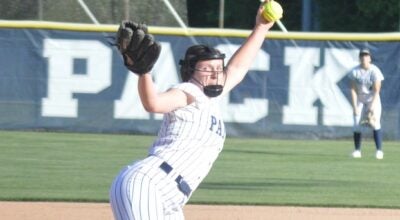Commercial fisherman ‘works hard’ for a living
Published 11:40 am Tuesday, July 15, 2014
I’d been casting lures for speckled trout when I watched a commercial fisherman round a nearby point, pulling in his gill net and removing fish from the tangle of monofilament line. I simply put my spinning rod down and watched his efforts as he floated closer to me.
It was late June and the weather was hot enough that I was sweating in my summer clothing. The water was “slick calm” and, even on the water, it was more like mid-July than late June. The break from casting my lures to trout was welcome.
At a distance, the commercial fisherman was obviously having some luck, as he removed fish after fish from some sort from the net, pulling the net back into his small boat. The white t-shirt he was wearing looked to be cool, but from his chest down he was wearing a set of black rubber coveralls. He must have been sweating gallons.
We struck up a conversation after he was close to me and I asked how his luck had been that morning. His reply surprised me. He’d taken a total of three flounder and one barely legal speckled trout for his mornings work.
Most of the fish he’d been removing from a nasty tangle of monofilament net were several species of stingrays.
“I wish that I had a market for these fish,” he said. “The N.C. State University seafood folks have tried to develop a market for these rays in the Asian markets, but the expense needed to catch, clean, pack and transport them to the market just isn’t worth the time and effort.”
Identifying himself as C.E. Godwin, we sat in our boats and talked for a while. Godwin had launched his small boat at McCotter’s Marina in Little Washington and traveled nearly 20 miles east on the Pamlico, checking his nets as he went. “If I’m really lucky, I might have taken enough legal fish to pay for my gas” was his lament.
I have to agree with a lot of commercial fishermen when they say, “This is a hard way to make a living.”
The Pamlico River has become notorious for the huge numbers of stingrays that seem to have been spending their summers in our waters. Sport fishermen curse them and commercial fishermen hate them for the damage they do to their nets, along with the shellfish beds they destroy. Cow nose rays are notorious for their fondness for blue crabs and the small bay scallops.
Many fishermen blame the rays for the decline in the population of blue crabs that we are apparently experiencing this year. It’s been many years since I’ve seen so few crab pot floats on the Pamlico River. The positive side of this is what few crabs are being caught are bringing a premium price to the fishermen.
There’s a lot of hard feelings between many of the sport fishermen and commercial fishermen. C.E. Godwin has experienced numerous instances of having his nets heavily damaged by boaters, who either don’t see or completely disregard the double-yellow floats that net fishermen are required by law to mark the position of their nets.
“They run across my nets at a high speed because they completely cut the net into pieces when they cross them. Both the top and bottom lines are cut completely in two,” he reports.
As we parted company that afternoon, it occurred to me that as a sport fisherman I’d caught more legal speckled trout that day than Godwin had taken with his nets. Most of the legal sized trout I’d taken were released and just a couple taken home for supper. Contrary to what we sport fishermen saw last year, about half of the trout I’d caught that day were over the legal size limit.
Other sport fishermen are reporting that they’re catching lots of gray and speckled trout out in the mid-Pamlico Sound area. The red drum also seem to be abundant this year and a lot of the ones being caught are within the legal-size limit.
Maybe last winter’s reported cold-kill on the speckled trout wasn’t as bad as many thought.






